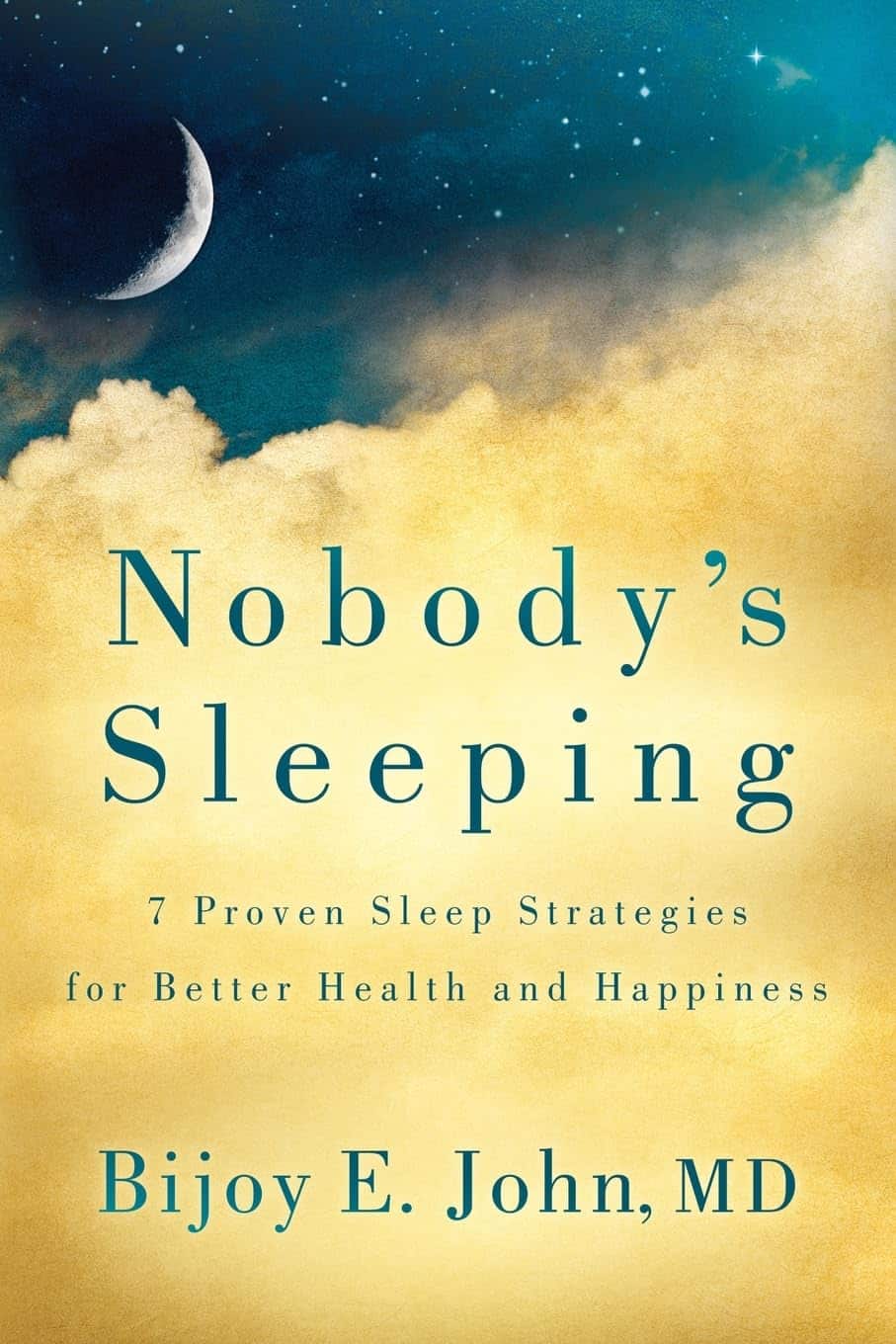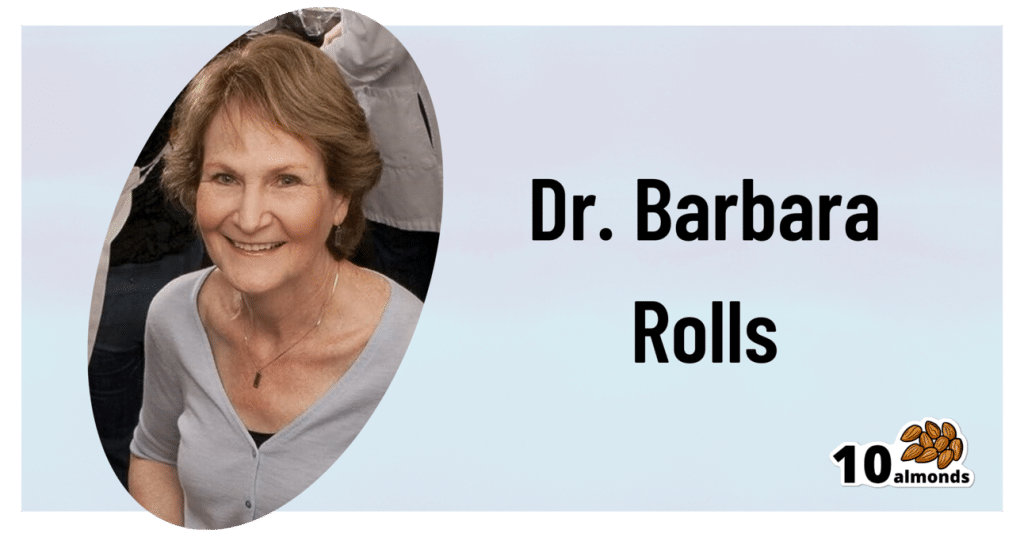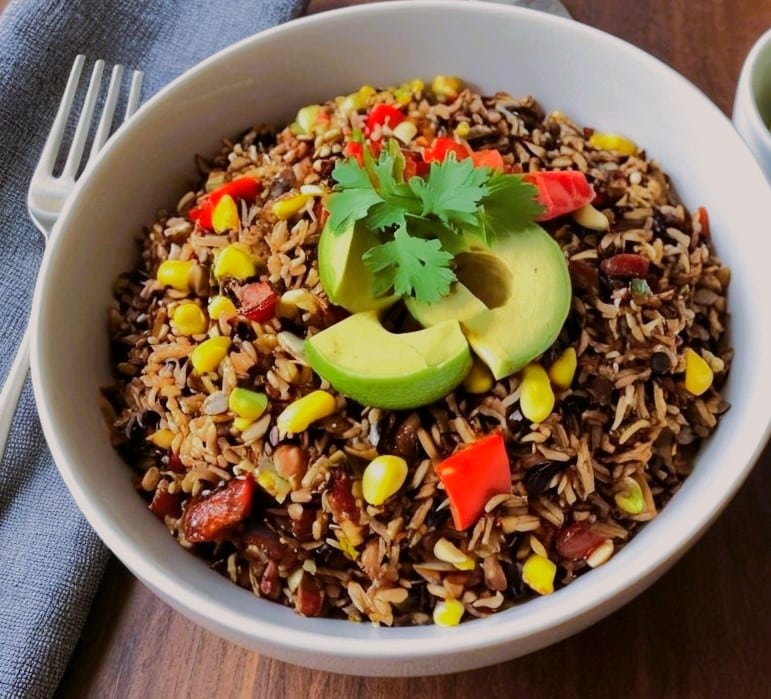
How Processed Is The Food You Buy, Really?
10almonds is reader-supported. We may, at no cost to you, receive a portion of sales if you purchase a product through a link in this article.
Ultraprocessed foods are a) ubiquitous in industrialized nations b) generally not fabulous for the health. See for example:
- Eat To Beat Cancer ← skipping the ultraprocessed foods is one main point
- What To Leave Off Your Table (To Stay Off This Surgeon’s) ← have a guess
Abstaining from ultraprocessed food can also be difficult psychologically, because they are generally engineered specifically to trigger certain physiological responses, often with their combination of sweet and/or salty flavors with simple carbohydrates that will zip straight into one’s veins and feel immediately rewarding, even if there is a health price to pay later.
And worse, being habituated to ultraprocessed food can make unprocessed or minimally-processed food seem less appealing:
What causes food cravings? And what can we do about them?
Fortunately, we can reverse this, and once we get habituated to unprocessed or minimally-processed food, the ultraprocessed will start to seem like not-food to us. You will wonder: how did I ever eat that crap?
Now, one other thing to bear in mind:
There is a scale of “badness”
You might recall this article:
Not all ultra-processed foods are bad for your health, whatever you might have heard
For example, Reese’s confectionary and Huel nutrition powder are both ultra-processed, but one is definitely better than the other.
See also: Are plant-based burgers really bad for your heart? Here’s what’s behind the scary headlines
Some comparisons are obvious; others, not so much. So, how to tell the difference?
The “True Food” Scale
A large study analyzed ingredient lists, nutrition facts, and prices of over 50,000 food items from Target, Whole Foods, and Walmart. Using a rigorous statistical method, they assigned processing scores and compiled data into a giant database, with results published publicly.
You can find the study here:
Prevalence of processed foods in major US grocery stores
That in and of itself doesn’t tell a lot that’s useful to the consumer, because the paper itself does not have all of the data from all 50,000 food items, just the aggregate results, trends, implications for public health, and suggestions for public health policy.
However, what does tell a lot, is the public face of the database itself, which you can browse for free, and look up your regular shopping items, if you are wondering “are these textured soy pieces basically a step away from soy beans, or a frankenfood that will murder me in my sleep?”
How it works: it examines each food, its listed ingredients, and what is known about the processedness of such ingredients. It also draws a distinction between ingredients and additives, rendering the entire process of the production of the food into an “ingredient tree”, showing what was added to what along the way. Minimally-processed foods will have barely an ingredient sapling, while ultraprocessed foods will have an ingredient tree whose branches can barely be counted, they are so numerous. It’s not just about the number of ingredients though; it’s about the processes that each underwent.
How it represents this data: you can look at the food in the database, and it’ll tell you the ingredients and nutritional facts (which you probably knew already; it’s written on the packaging), and then show you how processed it is, and then ranking that against all other foods in the database of the same kind.
So for example, if you are looking at a pizza (have you ever noticed how some are marketed with bright flashy colors, and others in natural tones to suggest minimal processing? This is marketing, not reliable information! Sometimes the product that looks healthier, isn’t!), then it’ll give it a score reflecting how it ranks compared to all other pizze in the database. This number is out of a hundred, and it reflects the percentile into which it falls.
So for example, if the score your pizza gets is 47, then that means that if you looked at it next to 99 others, on average your pizza would would rank better than 46 of them and worse than 53 of them.
In other words, the lower the score, the less processed it is on the whole.
Here’s a side-by-side example of two cakes, one of which got a score of 3, and the other got a score of 61:
Mini No Sugar Added Cheesecake vs EDWARDS Desserts Original Whipped Cheesecake
And here is the main menu of the database, in which you can use the search function to look up the food you want to check, or else browse by category:
The TrueFood Database: Search or Browse (it’s free!)
Enjoy!
Want to know more?
You might like this book that we reviewed a little while back:
Ultra-Processed People: The Science Behind Food That Isn’t Food – by Dr. Chris van Tulleken
Enjoy!
Don’t Forget…
Did you arrive here from our newsletter? Don’t forget to return to the email to continue learning!
Recommended
Learn to Age Gracefully
Join the 98k+ American women taking control of their health & aging with our 100% free (and fun!) daily emails:
-
3 Health Things A Lot Of People Are Getting Wrong (Don’t Make These Mistakes)
10almonds is reader-supported. We may, at no cost to you, receive a portion of sales if you purchase a product through a link in this article.
It’s time for our weekly health news roundup, and this week we’re putting the spotlight on…
Don’t Dabble In dubious diabetes Drugs
Diabetes drugs are in hot demand, both for actual diabetics and also for people who want to lose weight and/or generally improve their metabolic health. However, there are a lot of claims out there for products that simply do not work and/or are outright fakes, as well as claims for supplements that are known to have a real hypoglycemic effect (such as berberine) but the supplements in question are not regulated, so it can be hard to control for quality, to ensure you are really getting what it says on the label.
As for the prescription drugs specifically (such as metformin, or GLP-1 RAs): there are online black market and gray market pharmacies who offer to sell you prescription drugs either…
- no questions asked (black market), or
- basic questions asked (e.g. “are you diabetic?”), and a doctor with flexible morals will rubber-stamp the prescription on the basis of your answers (gray market).
The problem with these is that once again they may be fakes and there is practically no accountability (these sorts of online pharmacies come and go as quickly as street vendors). Furthermore, even if they are real, self-medicating in this fashion without the requisite expert knowledge can result in messing up dosages, which can cause all sorts of issues, not least of all, death.
Read in full: The dangers of fraudulent diabetes products and how to avoid them
Related: Metformin For Weight-Loss & More
There is no “just the flu”
It’s easy, and very socially normal, to dismiss flu—which has killed millions—as “just the flu”.
However, flu deaths have surpassed COVID deaths all so recently this year (you are mindful that COVID is still out and killing people, yes? Governments declaring the crisis over doesn’t make the virus pack up and retire), and because it’s peaking a little late (it had seemed to be peaking just after new year, which would be normal, but it’s enjoying a second larger surge now), people are letting their guard down more.
Thus, getting the current flu vaccination is good, if available (we know it’s not fun, but neither is being hospitalized by flu), and either way, taking care of all the usual disease-avoidance and immune-boosting strategies (see our “related” link for those).
Read in full: Report indicates this flu season is the worst in a decade
Related: Why Some People Get Sick More (And How To Not Be One Of Them)
The hospital washbasins that give you extra bugs
First they came for the hand-dryer machines, and we did not speak up because those things are so noisy.
But more seriously: just like hand-dryer machines are now fairly well-known to incubate and spread germs at impressive rates, washbasins have come under scrutiny because the process goes:
- Person A has germs on their hands, and washes them (yay)
- The germs are now in the washbasin (soap causes them to slide off, but doesn’t usually kill them)
- Person B has germs on their hands, and washes them
- The splashback from the water hitting the washbasin distributes person A’s germs onto person B
- Not just their hands, which would be less of a problem (they are getting washed right now, after all), but also their face, because yes, even with flow restrictors, the splashback produces respirable-sized bioaerosols that travel far and easily
In other words: it’s not just the visible/tangible splashback you need to be aware of, but also, that which you can’t see or feel, too.
Read in full: Researchers warn about germ splashback from washbasins
Related: The Truth About Handwashing
Take care!
Share This Post
-
Nobody’s Sleeping – by Dr. Bijoy John
10almonds is reader-supported. We may, at no cost to you, receive a portion of sales if you purchase a product through a link in this article.
Firstly, let’s mention: yes, for the sake of being methodical and comprehensive this book does give the same baseline advice as every other sleep book out there. However, it gives something else, too:
It goes beyond that baseline, to a) give more personalized advice for various demographics (e.g. per age, sex, health conditions, etc) and b) give direction for further personalizing one’s own sleep improvement journey, by troubleshooting and fixing things that may pertain to you very specifically and not to most people.
This means, that if you’re doing “all the right things” but still having sleep-related problems, there is hope and there are more approaches to try.
The style in which this is delivered is very readable, which is good, because if one hasn’t been sleeping well, then chances are that an intellectual challenge would be about as welcome as a physical challenge—that is to say: not at all.
Bottom line: if sleep is not your strength and you would like it to be and all the usual things haven’t yet worked, this book may well help you to overcome the hurdles between you and a good night’s sleep each night.
Click here to check out Nobody’s Sleeping, and refute that title!
Share This Post
-
Eat All You Want (But Wisely)
10almonds is reader-supported. We may, at no cost to you, receive a portion of sales if you purchase a product through a link in this article.
Some Surprising Truths About Hunger And Satiety
This is Dr. Barbara Rolls. She’s Professor and Guthrie Chair in Nutritional Sciences, and Director of the Laboratory for the Study of Human Ingestive Behavior at Pennsylvania State University, after graduating herself from Oxford and Cambridge (yes, both). Her “awards and honors” take up four A4 pages, so we won’t list them all here.
Most importantly, she’s an expert on hunger, satiety, and eating behavior in general.
What does she want us to know?
First and foremost: you cannot starve yourself thin, unless you literally starve yourself to death.
What this is about: any weight lost due to malnutrition (“not eating enough” is malnutrition) will always go back on once food becomes available. So unless you die first (not a great health plan), merely restricting good will always result in “yo-yo dieting”.
So, to avoid putting the weight back on and feeling miserable every day along the way… You need to eat as much as you feel you need.
But, there’s a trick here (it’s about making you genuinely feel you need less)!
Your body is an instrument—so play it
Your body is the tool you use to accomplish pretty much anything you do. It is, in large part, at your command. Then there are other parts you can’t control directly.
Dr. Rolls advises taking advantage of the fact that much of your body is a mindless machine that will simply follow instructions given.
That includes instructions like “feel hungry” or “feel full”. But how to choose those?
Volume matters
An important part of our satiety signalling is based on a physical sensation of fullness. This, by the way, is why bariatric surgery (making a stomach a small fraction of the size it was before) works. It’s not that people can’t eat more (the stomach is stretchy and can also be filled repeatedly), it’s that they don’t want to eat more because the pressure sensors around the stomach feel full, and signal the hormone leptin to tell the brain we’re full now.
Now consider:
- On the one hand, 20 grapes, fresh and bursting with flavor
- On the other hand, 20 raisins (so, dried grapes), containing the same calories
Which do you think will get the leptin flowing sooner? Of course, the fresh grapes, because of the volume.
So if you’ve ever seen those photos that show two foods side by side with the same number of calories but one is much larger (say, a small slice of pizza or a big salad), it’s not quite the cheap trick that it might have appeared.
Or rather… It is a cheap trick; it’s just a cheap trick that works because your stomach is quite a simple organ.
So, Dr. Rolls’ advice: generally speaking, go for voluminous food. Fruit is great from this, because there’s so much water. Air-popped popcorn also works great. Vegetables, too.
Water matters, but differently than you might think
A well-known trick is to drink water before and with a meal. That’s good, it’s good to be hydrated. However, it can be better. Dr. Rolls did an experiment:
The design:
❝Subjects received 1 of 3 isoenergetic (1128 kJ) preloads 17 min before lunch on 3 d and no preload on 1 d.
The preloads consisted of 1) chicken rice casserole, 2) chicken rice casserole served with a glass of water (356 g), and 3) chicken rice soup.
The soup contained the same ingredients (type and amount) as the casserole that was served with water.❞
The results:
❝Decreasing the energy density of and increasing the volume of the preload by adding water to it significantly increased fullness and reduced hunger and subsequent energy intake at lunch.
The equivalent amount of water served as a beverage with a food did not affect satiety.❞
The conclusion:
❝Consuming foods with a high water content more effectively reduced subsequent energy intake than did drinking water with food.❞
You can read the study in full (it’s a worthwhile read!) here:
Water incorporated into a food but not served with a food decreases energy intake in lean women
Protein matters
With all those fruits and vegetables and water, you may be wondering Dr. Rolls’ stance on proteins. It’s simple: protein is an appetite suppressant.
However, it takes about 20 minutes to signal the brain about that, so having some protein in a starter (if like this writer, you’re the cook of the household, a great option is to enjoy a small portion of nuts while cooking!) gets that clock ticking, to signal satiety sooner.
It may also help in other ways:
Clinical Evidence and Mechanisms of High-Protein Diet-Induced Weight Loss
As for other foods that can suppress appetite, by the way, you might like;
25 Foods That Act As Natural Appetite Suppressants
Variety matters, and in ways other than you might think
A wide variety of foods (especially: a wide variety of plants) in one’s diet is well recognized as a key to a good balanced diet.
However…
A wide variety of dishes at the table, meanwhile, promotes greater consumption of food.
Dr. Rolls did a study on this too, a while ago now (you’ll see how old it is) but the science seems robust:
Variety in a Meal Enhances Food Intake in Man
Notwithstanding the title, it wasnot about a man (that was just how scientists wrote in ye ancient times of 1981). The test subjects were, in order: rats, cats, a mixed group of men and women, the same group again, and then a different group of all women.
So, Dr. Rolls’ advice is: it’s better to have one 20-ingredient dish, than 10 dishes with 20 ingredients between them.
Sorry! We love tapas and buffets too, but that’s the science!
So, “one-pot” meals are king in this regard; even if you serve it with one side (reasonable), that’s still only two dishes, which is pretty good going.
Note that the most delicious many-ingredient stir-fries and similar dishes from around the world also fall into this category!
Want to know more?
If you have the time (it’s an hour), you can enjoy a class of hers for free:
Want to watch it, but not right now? Bookmark it for later
Enjoy!
Share This Post
Related Posts
-
Good Energy – by Dr. Casey Means
10almonds is reader-supported. We may, at no cost to you, receive a portion of sales if you purchase a product through a link in this article.
For a book with a title like “Good Energy” and chapters such as “Bad Energy Is the Root of Disease”, this is actually a very science-based book (and there are a flock of well-known doctors saying so in the “praise for” section, too).
The premise is simple: most of our health is a matter of what our metabolism is (or isn’t) doing, and it’s not just a case of “doing more” or “doing less”. Indeed, a lot of “our” energy is expended doing bad things (such as chronic inflammation, to give an obvious example).
Dr. Means outlines about a dozen things many people do wrong, and about a dozen things we can do right, to get our body’s energy system working for us, rather than against us.
The style here is pop-science throughout, and in the category of criticism, the bibliography is offloaded to her website (we prefer to have things in our hands). However, the information here is good, clearly-presented, and usefully actionable.
Bottom line: if you ever find yourself feeling run-down and like your body is using your resources against you rather than for you, this is the book to get you out of that slump!
Click here to check out Good Energy, and get your metabolism working for you!
Don’t Forget…
Did you arrive here from our newsletter? Don’t forget to return to the email to continue learning!
Learn to Age Gracefully
Join the 98k+ American women taking control of their health & aging with our 100% free (and fun!) daily emails:
-
Chipotle Chili Wild Rice
10almonds is reader-supported. We may, at no cost to you, receive a portion of sales if you purchase a product through a link in this article.
This is a very gut-healthy recipe that’s also tasty and filling, and packed with polyphenols too. What’s not to love?
You will need
- 1 cup cooked wild rice (we suggest cooking it with 1 tbsp chia seeds added)
- 7 oz cooked sweetcorn (can be from a tin or from frozen or cook it yourself)
- 4 oz charred jarred red peppers (these actually benefit from being from a jar—you can use fresh or frozen if necessary, but only jarred will give you the extra gut-healthy benefits from fermentation)
- 1 avocado, pitted, peeled, and cut into small chunks
- ½ red onion, thinly sliced
- 6–8 sun-dried tomatoes, chopped
- 2 tbsp extra virgin olive oil
- 2 tsp chipotle chili paste (adjust per your heat preferences)
- 1 tsp black pepper, coarse ground
- ½ tsp MSG or 1 tsp low-sodium salt
- Juice of 1 lime
Method
(we suggest you read everything at least once before doing anything)
1) Mix the cooked rice, red onion, sweetcorn, red peppers, avocado pieces, and sun-dried tomato, in a bowl. We recommend to do it gently, or you will end up with guacamole in there.
2) Mix the olive oil, lime juice, chipotle chili paste, black pepper, and MSG/salt, in another bowl. If perchance you have a conveniently small whisk, now is the time to use it. Failing that, a fork will suffice.
3) Add the contents of the second bowl to the first, tossing gently but thoroughly to combine well, and serve.
Enjoy!
Want to learn more?
For those interested in some of the science of what we have going on today:
- Brown Rice vs Wild Rice – Which is Healthier?
- Making Friends With Your Gut (You Can Thank Us Later)
- Capsaicin For Weight Loss And Against Inflammation
Take care!
Don’t Forget…
Did you arrive here from our newsletter? Don’t forget to return to the email to continue learning!
Learn to Age Gracefully
Join the 98k+ American women taking control of their health & aging with our 100% free (and fun!) daily emails:
-
Do Probiotics Work For Weight Loss?
10almonds is reader-supported. We may, at no cost to you, receive a portion of sales if you purchase a product through a link in this article.
It’s Q&A Day at 10almonds!
Have a question or a request? We love to hear from you!
In cases where we’ve already covered something, we might link to what we wrote before, but will always be happy to revisit any of our topics again in the future too—there’s always more to say!
As ever: if the question/request can be answered briefly, we’ll do it here in our Q&A Thursday edition. If not, we’ll make a main feature of it shortly afterwards!
So, no question/request too big or small
❝Can you talk about using probiotics for weight loss? Thanks❞
Great question! First, a quick catch-up:
How Much Difference Do Probiotic Supplements Make, Really?
Our above-linked article covers a number of important benefits of probiotic supplements, but we didn’t talk about weight loss at all. So let’s examine whether probiotics are useful for weight loss.
Up-front summary: the science is unclear
This 2021 systematic review found that they are indeed very effective:
❝The intake of probiotics or synbiotics could lead to significant weight reductions, either maintaining habitual lifestyle habits or in combination with energy restriction and/or increased physical activity for an average of 12 weeks.
Specific strains belonging to the genus Lactobacillus and Bifidobacterium were the most used and those that showed the best results in reducing body weight.
Both probiotics and synbiotics have the potential to help in weight loss in overweight and obese populations.❞
This slightly older (2015) systematic review and meta-analysis found the opposite:
❝Collectively, the RCTs examined in this meta-analysis indicated that probiotics have limited efficacy in terms of decreasing body weight and BMI and were not effective for weight loss.❞
Source: Probiotics for weight loss: a systematic review and meta-analysis
And in case that’s not balanced enough, this 2020 randomized controlled trial got mixed results:
❝Regression analysis performed to correlate abundance of species following supplementation with body composition parameters and biomarkers of obesity found an association between a decrease over time in blood glucose and an increase in Lactobacillus abundance, particularly in the synbiotic group.
However, the decrease over time in body mass, BMI, waist circumstance, and body fat mass was associated with a decrease in Bifidobacterium abundance.❞
Source: Effects of Synbiotic Supplement on Human Gut Microbiota, Body Composition and Weight Loss in Obesity
Summary
Probiotics may or may not work for weight loss.
In all likelihood, it depends on the blend of cultures contained in the supplement. It’s possible that Lactobacillus is more beneficial for weight loss than Bifidobacterium, which latter may actually reduce weight loss.
Or it might not, because that was just one study and correlation ≠ causation!
We’d love to give you a hard-and-fast answer, but if the data doesn’t support a hard-and-fast answer, we’re not going to lie to you.
What we can say for sure though is that probiotics come with very many health benefits, so whether or not weight loss is one of them, they’re a good thing to have for most people.
Some further articles that may interest you:
- How Much Difference Do Probiotic Supplements Make, Really? ← the aforementioned article
- Making Friends With Your Gut (You Can Thank Us Later) ← gut health 101
- Burn! How To Boost Your Metabolism ← these things can help change your metabolic base rate, which is highly relevant to weight loss
- How To Do HIIT (Without Wrecking Your Body) ←unlike most forms of exercise, which cause the body to slow the metabolism afterwards to compensate, high-intensity interval training results in an increased metabolic rate (so generally: fat-burning) for several hours after training.
Take care!
Don’t Forget…
Did you arrive here from our newsletter? Don’t forget to return to the email to continue learning!
Learn to Age Gracefully
Join the 98k+ American women taking control of their health & aging with our 100% free (and fun!) daily emails:









